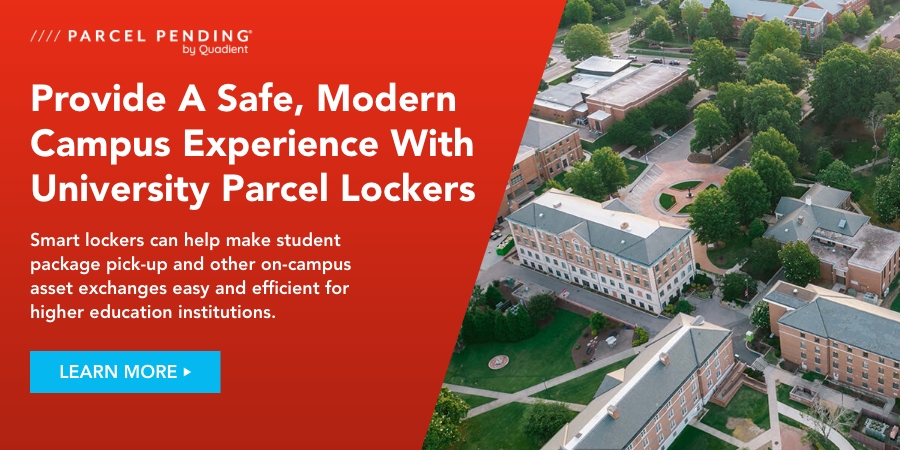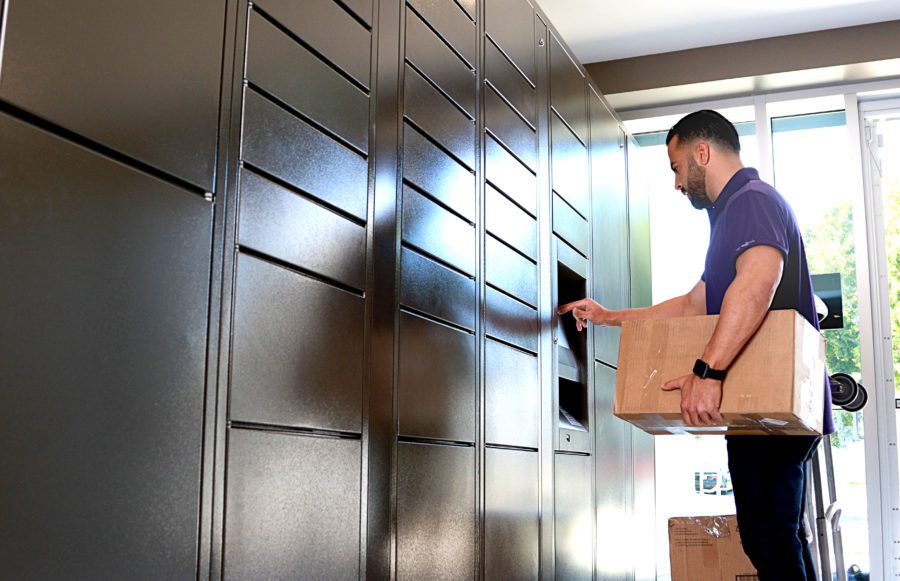
Our Blog
8 Applications of IoT in Higher Education
Written by: Parcel Pending
5 Min Read
Published: February 21, 2022
Updated: February 4, 2024
The Internet revolution ignited the next wave in higher education: IoT devices and applications for the education sector that increase student accessibility, bolster the educational experience, improve teacher efficiency, and enhance the interactive component of learning.
The Internet of Things (IoT) Defined
IoT describes the network of physical objects – “things” – that are embedded with sensors, software, and other technologies for the purpose of connecting and exchanging data with other devices and systems over the internet. These IoT devices range from window sensors that alert campus security to real-time test grading that allows students to see how they rank in the classroom. The number of IoT connected devices is expected to skyrocket to over 75 billion by 20251.
Read on to find out our top eight IoT applications in university environments:
#1 Online Learning: It’s a Permanent Shift
The pandemic demonstrated to all of us that distance learning is a reality that is here to stay. Almost 52% of students took an online course in 2020 compared to 37% in the fall 20192. And Babson Survey Research Group reports that 33% of college students are currently taking at least one online course.
Of course, higher education institutions have morphed dramatically since the early days of merely Zooming live lectures. Interesting to note that usage of the video app exploded in the second quarter of 2020, jumping from 100 billion annual meeting minutes to 2.6 trillion3. Today, learning platforms are evolving, integrating live lectures with pre-recorded ones and using specialized software created specifically for students. Top platforms include Seesaw, Google Classroom, Camtasia, OBS, and FlipGrid.
#2 Video & Visual Apps: They Boost Comprehension
As one key research paper concluded4: “Creating visual explanations improves learning.” Further, video-based learning increases student satisfaction by 90% and student achievement by 80%. As a result, more higher education institutions are incorporating video–using apps like YouTube or video creation apps such as EdPuzzle, PlayPosit, Vialogues, and MediaBreaker/Studios.
#3 Foreign Language Instruction: ¡Qué Bueno!
One key to success with connected devices and learning a foreign language is feedback in real–time. As most foreign learners have recognized, trying to master a language from a textbook is often an exercise in futility. Correct verb conjugation and pronunciation are critical components missing without instantaneous feedback.
Rensselaer Polytechnic Institute has created a revolutionary and immersive way to teach Mandarin. Students learn this Chinese dialect within a virtual computer-generated street scene by conversing with avatars. As one successful student explains5: “I thought it would be cheesy. It’s definitely more engaging because you’re actively involved with what’s going on.”
#4 Attendance Taking: Eliminating Roll Call
It might sound quotidian to consider the lowly task of taking attendance getting transformed via IoT, but it’s true. Traditional campus roll call takes teachers’ time away from the most important objective of all: teaching. Solutions include the application of scanning barcodes on student identification cards and biometric scanning via fingerprints.
#5 Online Proctoring: Preventing Cheating
Smart campus IoT technology is hard at work when it comes to proctoring. Sophisticated solutions include locking down browsers, detecting smart devices connected to the testing platform, and video monitoring to prevent cheating. Both teachers and students often welcome these tools as it releases teachers from the task while students recognize it levels the playing field.
#6 Assistive Technology: Broadening Educational Opportunities
A new field of IoT solutions has emerged in education called Assistive Technology. It is comprised of special tools or software that help disabled students navigate the student learning field. There are a few mind-blowing options that include alternative ways to hold and scroll through a computer, voice–activated tablet controls, real-time translation of voice into written communication, and unique solutions for those with autism and dyslexia. C-Pen, for example, blends optical character recognition with a camera to capture printed text. Its translator pen translates and pronounces words based on nine dictionaries. This smart device helps international students and those with learning disabilities to understand new topics faster.
An educational institution with smart campus features like smart lockers can leverage a Campus Hub™ model to allow students requesting these accommodations or disability services staff to pick up IoT solution rentals contact-free. All Parcel Pending by Quadient smart locker solutions are designed from the ground up to be universally easy to use and ADA accessible.
#7 Smart Classrooms
The simple whiteboard has gone the way of the overhead projector. Today’s students enter classrooms with smart boards that automatically save the information to the all-class e-folder. Huge monitors, screens, and fast wi-fi are de rigueur, allowing professors to integrate images, audio, and videos
Emerging technology such as augmented reality is also making its way into education. Specialized equipment coupled with surround sound enables students to immerse themselves into the subject matter and increase comprehension.
#8 Chatbots: New Uses Outside of E-Commerce
Although commonly connected to commerce, chatbots work in education too. If, for example, students are reading an e-textbook, they can easily type their question; the bot searches the knowledge base to deliver an answer quickly. These technology improvements also work to increase interaction, which in turn improves the user experience.
It’s easy to argue that hiring more teachers or educational reform is the secret to better learning, but it’s actually IoT devices and applications that are the wave of the future in education. It creates an amazing opportunity to welcome geographically distant students and those with disabilities while creating a better experience with better outcomes and greater connectivity.
Sources:
- Statista. Internet of Things (IoT) connected devices installed base worldwide from 2015 to 2025 (in billions). (2016, November 27). https://www.statista.com/statistics/471264/iot-number-of-connected-devices-worldwide/.
- Smalley, Suzanne. Inside Higher Ed. Half of All College Students Take Online Courses. (2021, October 13). https://www.insidehighered.com/news/2021/10/13/new-us-data-show-jump-college-students-learning-online.
- Adamo Software. The Future of Education Technology in 2022: Reveal Hidden Opportunities. (2021, December 14). https://adamosoft.com/blog/future-of-education-technology-in-2022/.
- Bobek, Eliza & Tversky, Barbara. Creating visual explanations improves learning. [(accessed on 23 February 2022)]; Available online: https://www.ncbi.nlm.nih.gov/pmc/articles/PMC5256450/
- Marcus, Jon. The New York Times. How Technology is Changing the Future of Higher Education. (2020, February 20). https://www.nytimes.com/2020/02/20/education/learning/education-technology.html.




